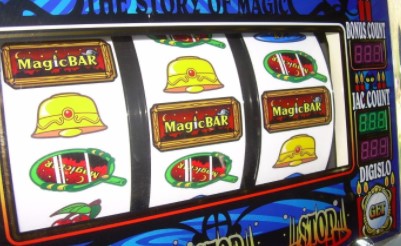Issues Simple Solutions to Pachislo Hopper Errors
Most hopper problems are simple to fix. The hopper error codes do not provide any specific information about the issue. You must first identify the problem.
Step 1: Disconnect the Hopper
There are two hopper connections on the spin slot machine: one has a cord that connects the hopper to the power supply. The other is where the hopper is secured when it is fully inserted into the back.
If the wire running from your hopper to the power source is damaged, it can be removed from either the power supply or from the connector on the hopper.
Pull the hopper towards yourself – it is held by a track. If it feels right, move it around slightly. You may find a clip with a white stripe on the bottom of the hopper that you need to push down as you pull the hopper towards your face. Some machines may have a piece of plastic between the hopper and the device. Lift the hopper above the plastic and pull it towards you.
If the wire connects to the hopper, either remove it from the hopper or the power supply.
Step 2: Take off the top of the hopper
The two sections of hoppers are screwed together or clipped together. The plastic in which the coins are placed is in the top section. The wheel, connector, and sensor are located in the bottom area. You can remove the top of the hopper.
Use a Phillips screwdriver to remove any screws from your hopper. There should be four screws, two on the inside and two outside the coin area. The top will fall off once the screws have been removed. You will then be able to see the bottom with the wheel exposed.
Clips can also be attached to the hopper’s bottom. These clips are typically yellow. Two yellow clips are found on the corners of the most common. The pins should be pulled towards you.
Step 3: Look for Jammed Coins
For jammed coins, look in the area where coins exit the hopper. These coins will be visible immediately once you have a view of the entire wheel. You can remove the obstruction and manually test the wheel.
Step 4: Lubricate your Wheel
The hopper wheel should turn clockwise quickly. Try to spin the wheel if you don’t have any coins in it. If the wheel seems too tight, it could be rusty or other reasons. Check for obstructions again. Clean the wheel and the surrounding area. It may be necessary to spray the wheel with silicone. Do not use WD40 or use too much spray. It will only take a quick spray. To let the lubricant work its magic, you should turn the wheel for a few seconds.
Step 5: Clean the Sensor
If you can see no obstructions and the wheel is moving freely, look in the area where coins are being paid from the hopper. You will see a spring-loaded arm on the top of the hopper. The arm moves through a sensor when tokens have been paid out. This causes the daylight to go out and sends a signal that the ticket has been paid. Use a Q-tip to clean the sensor.
Step 6: Lubricate Sensor Arm and Spring
Sometimes, the spring-loaded arm that breaks off the sensor can seize up due to dirt or rust. Spray some silicone on the arm and springs. Move the arm manually for a few moments to get the lubricant into both the spring and arm. It will begin to move freely, and the spring will pull the arm forward when it pulls it back. It will move freely when the spring pulls it back in place.
Step 7: Manually test the hopper
Place a few coins on the wheel and rotate the wheel clockwise. The tokens will fall into the holes and then move toward the payout chute. Once everything is clean and lubricated, you’ll see the permits drop into the holes in the wheel and move up towards the payout chute.
If the wheel stops moving, clean it and inspect for obstructions.
Suppose coins are falling out of the payout chute but not being shot out, clean and lubricate their spring-loaded arms. After moving it through the sensor, ensure that it springs back into place quickly. Make sure it isn’t hitting it but moving through it.
Pachislo Coin Jam Prevention & Solutions
Square Plastic Brown or Black Coin Mechanism
1. Turn off the machine
2.Remove the bottom coin shield.
The coin shields on square brown coin mechanisms may be hinged. Black versions come with removable coin shields. To remove, press in on the left or right.
The spring can be seen in the photo if you look closely. 3. A spring-loaded area covers the coin path. The spring-loaded area can be pulled up. It moves upwards to the upper right.
4.) Clear the coin using your finger.
If you cannot see the coin in the acceptor at the front of your machine, pull it out. If the coin is stuck in a place you cannot see or remove, open the spring-loaded area. Push another token UP to push the cash out and pull it through the front. If necessary, turn the machine on again and reset it.
The more extended versions made of metal will work in the same manner but with a spring-loaded front.
How to prevent coin jams
Most coin jams do not occur because of problems with the machine but rather tokens or dirt.
Most Pachislos only accept.984″ tokens. Even though your tokens might appear identical, slight variations in their length or width could cause coin jams.
Coin mechanisms can become very dirty over time. The tokens would slide along the coin path slowly and become stuck in the mechanism. These steps will prevent coin jams in future.
1. To remove magnetic tokens, run a magnet on them. Many machines can jam or kick out magnetic tickets and send an error code.
2.Check Token Sizes
Pashiclos accept only.984″ tokens. Although all tokens might appear identical in size, your machine may have a preference. Anything less than.984 will cause jamming. Place the tokens in small stacks. If any of them are slightly thicker or smaller than others, you can remove them.
3.Kaboom cleaner.
Combine a bit in a bowl of warm water. Mix the tokens for a few seconds. Before you use them, rinse them and dry them. To prevent dirt buildup in your coin mechanism, coin path, and hopper, you should rinse them every six months if you use your machine frequently.
4.Clean the Mechanism
It is easy to remove the mechanism. It is easy to remove the tool by unplugging it. Next, clean it with a damp cloth. Lift the spring-loaded area and clean it there. Use a screwdriver, a sharp knife, or an Exacto knife to remove any rust from the metal coin path. Then wipe it clean with a damp cloth. After you’re done, spray a minimal amount of silicone spray on the way and wipe off any excess.
5.Clean the Coin Chute & the Coin Acceptor
Clean the coin acceptor outside the machine while the coin mechanism is removed. Use wet wipes if you have them. Push a small knife into the coin acceptor, pulling the side that is facing the machine. Once you’re satisfied, spray one drop of silicone spray onto the coin acceptor. Wipe off any excess silicone.
Navigating the Inner Workings of the Pachislo Hopper
Ever wondered about the heartbeat of the Pachislo machine? It thrums and ticks in the form of its hopper system. It’s that clever little piece ensuring your tokens drop neatly into your hands, particularly after that exhilarating jackpot. But, as is the case with anything that moves and functions, occasionally, it might grumble and groan. Here’s an explorative dive into some misbehaving components and their troubleshoots.
The Hopper’s Heart: Motor & Drive
Step 8: Motor Glitches: Sometimes, the hopper’s heart skips a beat. The motor, responsible for the merry-go-round movement of the wheel, might sulk. Wear, tear, or a petulant voltage surge might be the culprits. Burnt odors, strange sounds, or glaring damages are giveaways. A heart transplant, or in layman’s terms, a motor replacement, might be in order.
Step 9: Drive Mechanics: This is the maestro conducting the harmony between gears. Dust, being the uninvited guest, often crashes the party, leading to less-than-stellar performances. A meticulous cleanup, ensuring gears click and clack in rhythm, is paramount.
External Invaders & Their Antics
Step 10: Humidity’s Hiccups: Oddly, the world outside wields influence. Dampness has a mischievous way of making coins stick together like old friends at a reunion. Think about dehumidifiers or, simpler, let the room breathe.
Step 11: Coins’ Tale: Coins aren’t just metal discs. They tell stories, sometimes of rusted adventures or grimy encounters. Ensure they’re spick and span; otherwise, they may litter your machine’s pathways.
Step 12: Routine’s Reward: Regular TLC does wonders. An eagle eye every month ensures your hopper hums a happy tune. Check, swab, oil – a ritual that extends your machine’s youthful vigor.
Backup Beats & Tech Tunes
Step 13: An Ace up the Sleeve: Think about a standby hopper, especially if you’re juggling many Pachislo marvels. It’s like having an understudy in a play, ready to jump in.
Step 14: The Experts’ Encore: DIY is delightful, but occasionally the performance demands a maestro. Having a tech guru’s number on speed dial? Priceless.
The Grand Finale
Pachislo machines, like orchestras, are an assembly of precision and art. Their melodies and mechanics enthrall and entertain. But they too need intermissions, care, and the occasional tuning. After all, it’s not merely about mending when there’s a miss, but cherishing the symphony and safeguarding its rhythm for many more encores.

